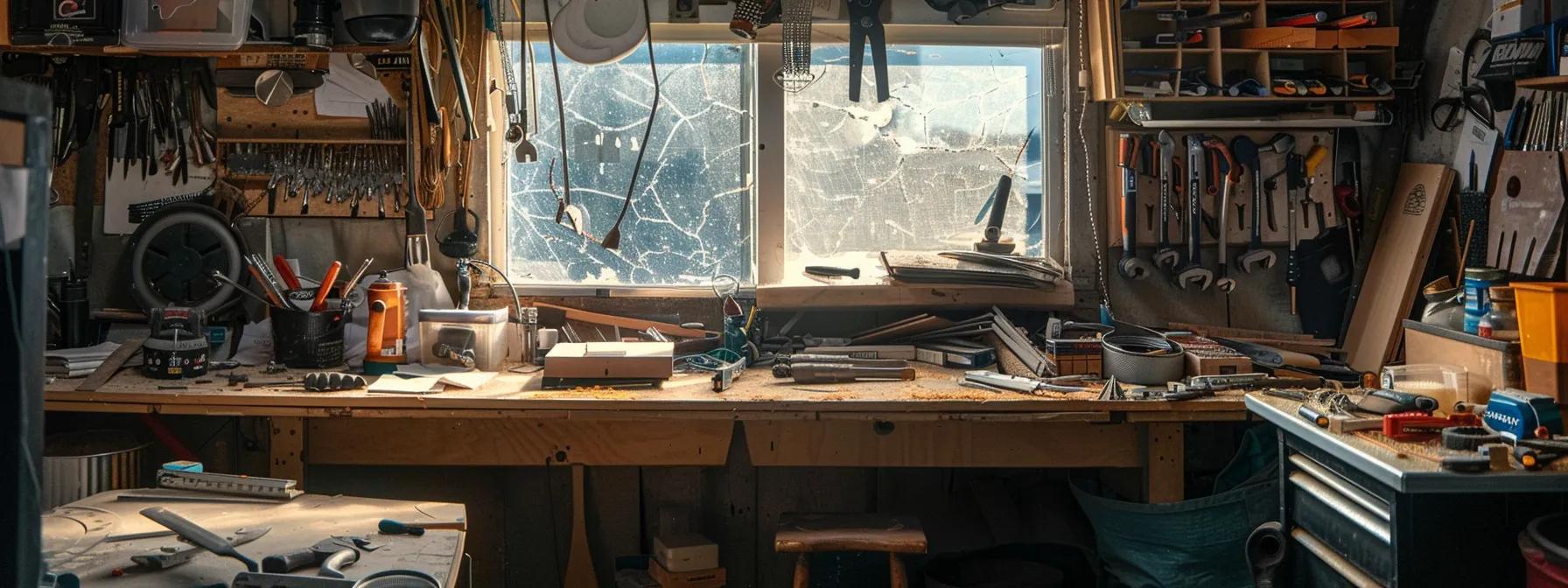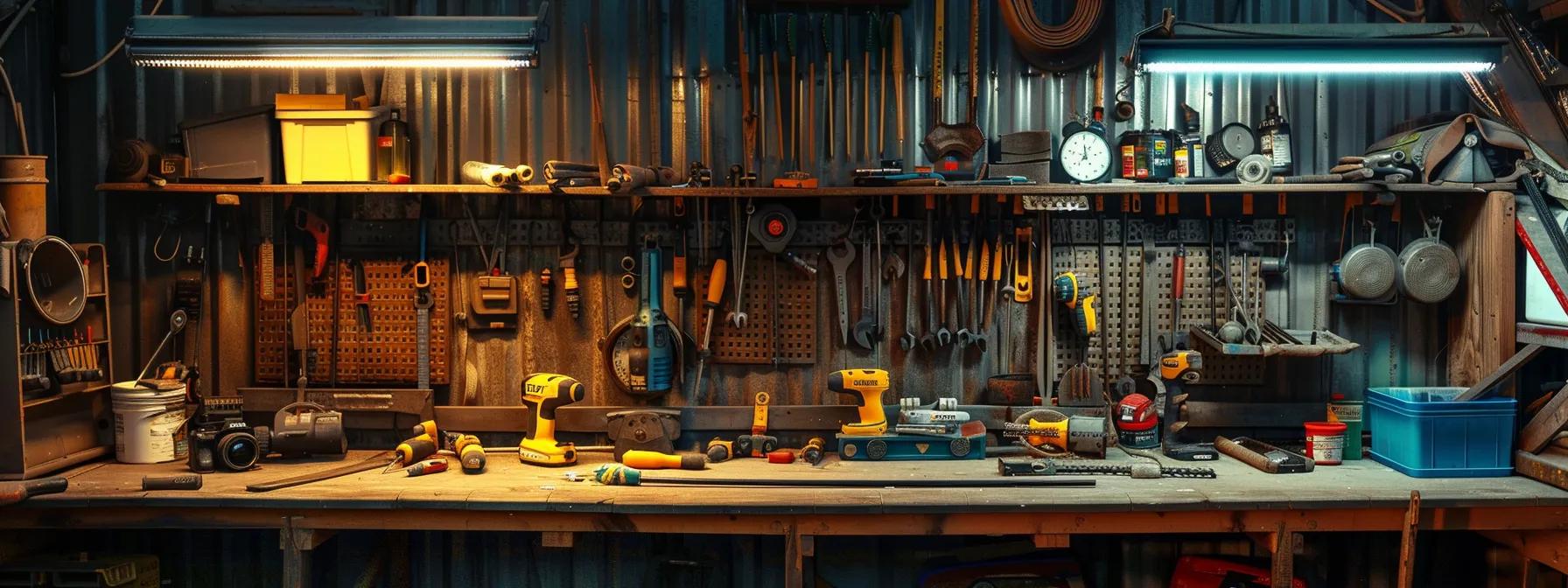Is DIY Gutter Maintenance a Smart Financial Decision?

DIY Gutter Maintenance Costs: Is It Worth It?
Gutter upkeep is a critical part of home maintenance that often goes unnoticed until water damage or other serious issues occur. Homeowners face the decision between doing it themselves and hiring professionals, and understanding the associated costs, including the gutter cost, is key to making an informed choice. This article provides a comprehensive breakdown of DIY gutter maintenance expenses, examining both the direct costs of materials and tools as well as the hidden expenditures such as time, safety, and potential repair liabilities due to inexperience. With rising weather extremes like heavy rain, wind-driven debris, and the need for gutter guard installation to prevent clogs and water damage to your fascia and roof, knowing where your money goes is more essential than ever.
Precision Pro Services, Arizona’s leading provider of gutter solutions, understands that a well-maintained gutter system protects your landscape, crawl space, basement, and overall home structure. Homeowners are challenged not only by the fee for professional cleaning but also by the need to reposition seasonal equipment or invest in protective coatings to secure the lifelong longevity of their gutters. DIY enthusiasts must consider material expenses for common repairs, tools required for safe installation, and even the costs related to personal health and safety from potential injuries on ladders. Although DIY maintenance may seem like an opportunity for cost savings, ongoing and hidden costs can sometimes make professional services more cost-effective in the long run.
This article guides homeowners through every aspect of DIY gutter maintenance—from initial tool acquisition and material expenses to assessing the financial impact of the time spent. It compares DIY costs with fees for professional gutter cleaning and repairs, taking into account guarantees and long-term value propositions. Readers will learn about regional price variations, gutter system complexity, and the trade-offs between personal satisfaction and physical strain. By the end, homeowners will be better positioned to decide if DIY gutter maintenance offers true savings or whether investing in professional expertise is a smarter choice for their home and budget.
Transitioning now to a detailed examination, the following sections cover initial costs, ongoing expenses, professional fee comparisons, influencing factors, non-financial aspects, and ultimately, whether DIY efforts result in genuine savings.
Breaking Down Your Initial DIY Gutter Maintenance Costs
The upfront expenses for DIY gutter maintenance begin with acquiring the appropriate tools and materials. These initial costs include tangible items such as ladders, gutter cleaning tools, sealants, and essential safety gear like harnesses and gloves. These investments are crucial for establishing a safe and effective maintenance routine.
Acquiring Essential Tools for Gutter Upkeep
Maintaining your gutter system starts with obtaining the necessary tools. Common items include a sturdy ladder, a professional-quality gutter scoop, a pressure washer or a hose with a high-pressure nozzle, and additional cleaning attachments. A reliable ladder ensures safe access to high areas, while specialized gutter tools help remove debris, leaves, and dirt efficiently. Given varying roof pitches and gutter designs, tools like telescoping gutter cleaning wands can enhance reach and efficiency when working around high or awkward angles. Although the initial expense may seem steep, high-quality tools often last longer and reduce the need for frequent replacements, resulting in long-term savings and less dependency on professional services.
Material Expenses for Common Gutter Repairs
DIY gutter repairs may require additional materials beyond cleaning supplies. Essential repair materials include quality sealants for minor leaks, replacement gutter sections for areas affected by corrosion, and fasteners such as screws and brackets. Re-sealing joints prevents water from seeping into fascia boards or the roof deck. Because weather conditions can wear down sealants over time, periodic reapplication might be necessary, adding to ongoing costs. Homeowners should consider purchasing these supplies in bulk during off-peak seasons to reduce overall expenses.
Safety Gear Investments for DIY Gutter Work
Working on ladders or at heights introduces safety risks that must be mitigated with proper equipment. Investing in high-quality safety gear—such as harnesses, non-slip footwear, hard hats, and protective gloves—is crucial. This gear not only minimizes the risk of falls and injuries but also helps ensure that maintenance work complies with safety standards. Though safety equipment increases the upfront cost, it mitigates the risk of accidents and the associated medical expenses, making it a worthwhile investment.
Optional Equipment to Simplify Gutter Maintenance
Optional items such as gutter guard installation kits, extendable cleaning tools, or motorized gutter vacuums can further simplify maintenance if the budget allows. Gutter guards help reduce cleaning frequency by preventing large debris from entering the gutter, while extendable cleaning tools reduce physical strain when reaching difficult spots. Although not strictly required, these optional tools can offer convenience and added efficiency, particularly for aging homeowners or those with physical limitations.
Ongoing and Hidden Expenses in DIY Gutter Care

Beyond initial investments, DIY gutter maintenance involves ongoing and hidden costs that can add up over time. These include replacement costs for consumable supplies, the time invested in regular cleaning, potential repairs from inexperience, and health-related expenses due to injuries.
Replacement Costs for Consumable Gutter Supplies
Consumables such as sealants, cleaning solutions, and disposable cleaning tools have a recurring cost because they degrade from exposure to harsh weather. Sealants and adhesives often require repeated applications to maintain a waterproof seal. Other items like cleaning brushes and protective covers may also wear out with frequent use. It is important to budget for these replacement costs as part of your ongoing maintenance plan.
Time Valuation: The Unseen Cost
Time is an important, yet often underappreciated, expense with DIY maintenance. Hours spent gathering tools, setting up ladders, cleaning, and conducting repairs can add up quickly. This time, which could be spent on professional services or leisure, represents an indirect financial cost. Homeowners should evaluate the value of their time when considering DIY versus professional services, as the non-linear learning curve of new projects may translate to higher than expected time investments.
Potential Repair Costs from Inexperienced Maintenance
A further risk in DIY gutter maintenance is the possibility of improper installation or faulty repairs due to inexperience. Misaligned gutters or inadequately sealed joints can lead to water pooling or leaks, which may result in extensive damage over time. Such errors can force homeowners to spend more on professional repairs later. Thus, the risk of these additional repair costs is a critical factor when weighing the savings of doing the work independently.
Health and Safety Risks Translated to Financial Impact
Injuries sustained during DIY gutter maintenance, such as falls or ladder mishaps, can have significant financial repercussions in terms of medical expenses, lost wages, and increased home insurance premiums. Even with safety equipment, improper use can result in accidents. Therefore, the potential hidden health and safety costs must be factored into the overall cost comparison of DIY versus professional gutter maintenance.
Comparing DIY Gutter Maintenance Costs With Professional Service Fees
Deciding between DIY and professional gutter maintenance involves comparing not only the direct expenses but also the long-term value delivered by each method. Professional fees often include additional assurances such as service guarantees and warranties that can offset risks associated with DIY maintenance.
Typical Charges for Professional Gutter Cleaning Services
Professional gutter cleaning services commonly charge a flat rate that varies depending on the home’s size, roof pitch, and gutter complexity. Average fees range from $100 to $300 for a standard home, with higher rates for larger or more complex properties. Some companies may charge extra for cleaning downspouts or performing additional maintenance tasks. These fees reflect the professionals' ability to complete the job efficiently, with specialized tools and without the safety risks that come with DIY.
Understanding Quotes for Professional Gutter Repairs
When professionals repair gutters, the quoted rates generally cover labor, materials (such as sealants or replacement gutter sections), and sometimes debris removal. Detailed quotes help homeowners understand where each dollar is spent and ensure transparency regarding any additional charges. Professional repairs often come with warranties, reducing the risk of future expenses due to faulty repairs.
Analyzing the Long-Term Value of Professional Gutter Inspections
Many professional services include regular inspections that detect early signs of wear or blockages before they escalate into larger, costlier problems. These proactive inspections reduce the need for extensive repairs over time, thereby lowering the total cost of ownership. The long-term benefits of these inspections lend significant value to professional maintenance regardless of the higher upfront fee.
How Professional Guarantees Offset Their Service Costs
Professional services typically offer guarantees that cover both the quality of work and any necessary follow-up repairs. Such service guarantees serve as a safety net, ensuring that if issues arise, they will be remedied at little or no additional cost to the homeowner. This comprehensive coverage can justify the higher initial cost when compared with the potential risks and hidden costs associated with DIY work.
Factors Influencing Your Total DIY Gutter Maintenance Expenditure

Several factors directly influence the cost of DIY gutter maintenance. These include the physical characteristics of the gutter system, maintenance frequency, regional price differences for tools and materials, and the current condition of the gutters.
The Size and Complexity of Your Gutter System
The total length and design complexity of the gutter system significantly affect the time and material costs involved in maintenance. Larger homes with intricate layouts or multiple downspouts require more extensive cleaning and more specialized tools, which in turn raise the overall maintenance costs. Complex systems increase the potential for errors and may require additional, sometimes professional, interventions.
Frequency of Maintenance Needed for Your Property
Maintenance frequency depends largely on environmental factors and the surrounding landscape. Homes in areas with heavy tree cover or high rainfall typically require more frequent cleaning, which increases the consumption of supplies and the time spent on maintenance. A less demanding environment results in lower recurring costs, making DIY more attractive for such properties.
Regional Price Variations for Tools and Materials
Prices for tools, safety gear, and repair materials can vary significantly by region due to local market conditions, competition, and shipping costs. In regions with higher material costs or harsher weather conditions, investing in higher-quality, weather-resistant tools may be necessary, which can increase the overall budget for DIY maintenance.
The Current Condition of Your Gutters
Older or poorly maintained gutters may require more frequent repairs and more extensive cleaning routines, leading to higher costs in both materials and labor. In contrast, well-maintained or newer gutters might only need occasional care, making DIY maintenance a more viable and cost-effective option.
Evaluating the Non-Financial Aspects of DIY Gutter Maintenance
While financial considerations are critical, non-financial aspects also play an important role in the decision-making process. Factors such as personal satisfaction, physical demands, time commitment, and skill development can influence whether a homeowner chooses a DIY approach.
The Personal Satisfaction of Completing Home Repairs
Many homeowners find real satisfaction in completing their own home repairs. DIY gutter maintenance can provide a sense of accomplishment that comes from seeing tangible improvements on one’s property. This personal achievement is often accompanied by increased confidence in handling future repairs and a strengthened connection to the home.
Assessing Your Physical Ability for Gutter Work
DIY gutter work is physically demanding. It requires balance, coordination, and the ability to work safely at heights. Homeowners should honestly assess their physical condition and consider whether they are comfortable with tasks such as climbing ladders and handling heavy equipment. For those with limited mobility or health issues, professional services might be the safer and more practical option.
Time Commitment Versus Your Available Schedule
Time is a valuable resource. The hours spent on DIY gutter maintenance could otherwise be used for leisure or alternative home improvement projects. Evaluating whether the potential monetary savings of a DIY approach justify the time investment is essential. For busy homeowners, the efficient execution offered by professionals might outweigh the benefits of saving money through DIY.
Acquiring New Skills Through Gutter Maintenance Tasks
DIY projects provide an opportunity to learn and develop important home repair skills. Becoming proficient in gutter maintenance can lead to greater self-reliance and the ability to handle other repairs independently. Over time, the skills acquired may help reduce costs associated with future problems by enabling homeowners to better communicate with professionals when needed.
Comprehensive List of Non-Financial Benefits
Below is a list of the key non-financial benefits of DIY gutter maintenance:
Personal Fulfillment – Enhances the emotional connection to your home.
Skill Development – Fosters independence in handling home repairs.
Increased Self-Reliance – Builds confidence in managing property maintenance.
Flexibility and Control – Allows scheduling repairs at one’s convenience.
Quality Assurance – Enables close attention to detail and workmanship.
Long-Term Cost Savings – Reduces future repair costs through skill acquisition.
Environmental Awareness – Encourages sustainable practices by maximizing the life of existing materials.
Determining if DIY Gutter Maintenance Costs Offer True Savings
After considering both financial and non-financial factors, the key question is whether DIY gutter maintenance truly offers savings compared to professional services. The final decision often depends on balancing upfront costs, ongoing expenses, personal skills, and safety considerations.
Situations Where DIY Gutter Upkeep Is Most Economical
DIY maintenance tends to be most cost-effective for homes with straightforward gutter systems in regions with moderate material costs. Homeowners who already possess some of the necessary tools and have experience with upkeep can keep consumable expenses low. Additionally, if a property experiences mild weather without frequent heavy rain or wind events, the less demanding maintenance schedule makes DIY an attractive option.
When Professional Gutter Services Are More Cost-Effective
In contrast, homes with complex gutter configurations, longer gutter systems, or those located in areas prone to extreme weather conditions are better served by professional services. If the risk of water damage, frequent clogged gutters, or potential injuries is high, the quick, efficient, and insured service provided by professionals may reduce overall costs by preventing extensive damage.
Calculating Your Personal Break-Even Point for DIY Gutter Costs
Determining your break-even point involves comparing the cumulative costs of DIY maintenance—including tool investments, consumable replacements, time, and potential repair risks—against the flat rate or service fee charged by professionals. If DIY expenses approach or exceed the professional fee, the latter becomes the more attractive option.
Making a Smart Choice for Your Home and Budget
Ultimately, assessing the best approach depends on your individual situation. Consider the state of your gutter system, local cost variations, and the value of your time. When risks are low and you are physically capable, DIY maintenance can yield genuine savings. However, if safety, efficiency, and long-term repair guarantees are paramount, hiring professionals might deliver superior value despite the higher upfront cost.
Frequently Asked Questions
Q: What initial investments are required for DIY gutter maintenance? A: Initial investments include essential tools like a sturdy ladder, gutter scoops, and pressure washers. Safety gear such as harnesses, gloves, and non-slip footwear, along with repair materials like sealants and replacement fasteners, are also necessary. These items ensure safe and effective maintenance while reducing the risk of costly repairs.
Q: How often should gutters be cleaned to prevent long-term damage? A: Gutters should be cleaned at least twice a year, typically during the spring and fall. In areas with heavy tree cover or frequent storms, more frequent cleaning is recommended to prevent clogs and water damage.
Q: Are the hidden costs of DIY gutter maintenance significant compared to professional services? A: Yes, hidden costs such as the value of your time, potential repair expenses from mistakes, and health and safety risks can add up, occasionally making DIY approaches more expensive than professional services over time.
Q: Can homeowners reduce DIY maintenance costs by buying supplies in bulk? A: Absolutely. Purchasing high-quality consumables and repair materials in bulk during off-peak seasons can lower overall expenses and ensure a steady supply of essential items.
Q: What factors determine whether DIY gutter maintenance is more cost-effective than hiring professionals? A: The effectiveness of DIY maintenance depends on the size and complexity of the gutter system, local material and tool prices, maintenance frequency, physical ability, and the potential risk of future repair costs due to errors. Evaluating these factors helps determine which approach offers true savings.
Final Thoughts
DIY gutter maintenance involves a careful balance between upfront investments, ongoing expenses, personal satisfaction, and safety considerations. Comparing direct material costs with professional fees and accounting for hidden expenses is crucial in making an informed decision. Ultimately, the choice between a DIY approach and hiring professionals depends on individual circumstances—including property size, environmental challenges, and personal ability—ensuring the most cost-effective and safe solution for maintaining your gutter system.
Detailed List of Essential DIY Gutter Maintenance Tools and Supplies
Sturdy Ladder – Ensures Safe Access A quality ladder is indispensable for safely accessing gutters. Investing in a sturdy, extendable ladder that meets safety standards reduces the risk of falls and ensures secure positioning while performing maintenance tasks.
Gutter Scoop – Efficient Debris Removal A specialized gutter scoop efficiently removes clogged leaves and debris without damaging the gutter. Its ergonomic design minimizes strain, making it easier to clean even tight corners.
Pressure Washer Attachments – Enhanced Cleaning Power Pressure washer attachments, such as high-pressure nozzles or specialized gutter tools, help remove stubborn dirt and prevent mold buildup. Their use can extend the lifespan of your gutters by reducing the frequency of necessary cleanings.
Sealants and Adhesives – Minimizes Leaks and Repairs Investing in high-quality, weather-resistant sealants and adhesives is essential for repairing minor leaks and sealing joints securely, thereby protecting your gutter system from future water damage.
Safety Harness and Protective Gear – Reduces Risk of Injury Using a safety harness along with gloves and non-slip footwear prevents injuries during maintenance. This protective gear is crucial for safe work on ladders and around rooftop edges.
Extendable Cleaning Tools – For Hard-to-Reach Areas Extendable cleaning tools, such as telescoping wands, reduce the need for frequently repositioning ladders, thereby lowering physical strain and enhancing cleaning efficiency.
Optional Gutter Guard Kits – Preventative Maintenance Solutions Gutter guard kits can prevent debris buildup and reduce the frequency of clogs, offering long-term savings despite a higher initial cost.
Frequently Asked Questions
Q: How do I accurately estimate the initial costs for DIY gutter maintenance? A: Estimate by considering the cost of essential tools (ladder, scoop, pressure washer attachments) and safety gear (harness, gloves). Also, budget for consumable repair materials like sealants and fasteners. Compare these expenses with the potential longevity and efficiency gains from high-quality products.
Q: What hidden costs should I be aware of when choosing the DIY route? A: Consider the time investment, potential mistakes leading to costly repairs, and the risk of injuries. These hidden costs can sometimes make DIY projects more expensive than anticipated.
Q: Are professional gutter services truly more cost-effective than DIY in the long run? A: Often yes, particularly for homes with complex systems or in harsh climates. Professionals provide quicker service, comprehensive inspections, and warranties that may offset higher initial fees.
Q: How frequently should gutters be inspected and maintained to avoid costly repairs? A: At least twice a year—typically in spring and fall—with additional cleaning during periods of heavy debris or storms. Regular inspections help preempt severe damage.
Q: Can the skills gained from DIY gutter maintenance reduce future home repair costs? A: Yes, by learning to handle minor repairs and understanding when professional help is needed, homeowners can reduce future costs and communicate better with repair technicians.
Final Thoughts
DIY gutter maintenance requires weighing upfront investments and recurring expenses against personal satisfaction and improved home repair skills. By comparing direct material costs with professional service fees—while also accounting for hidden risks and time expenditures—homeowners can choose the most cost-effective, safe approach to protecting their home's gutter system. The decision ultimately depends on your property’s unique needs, local conditions, and your capability to manage maintenance tasks.
